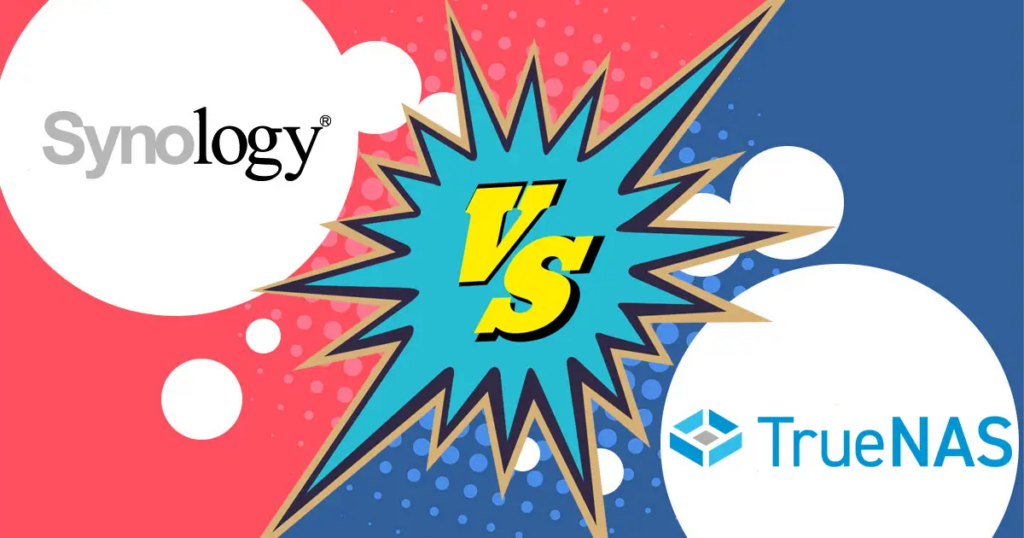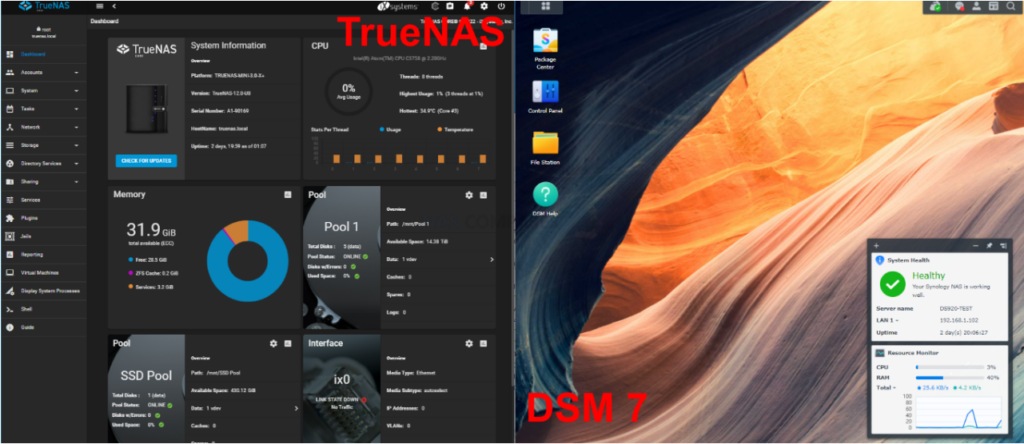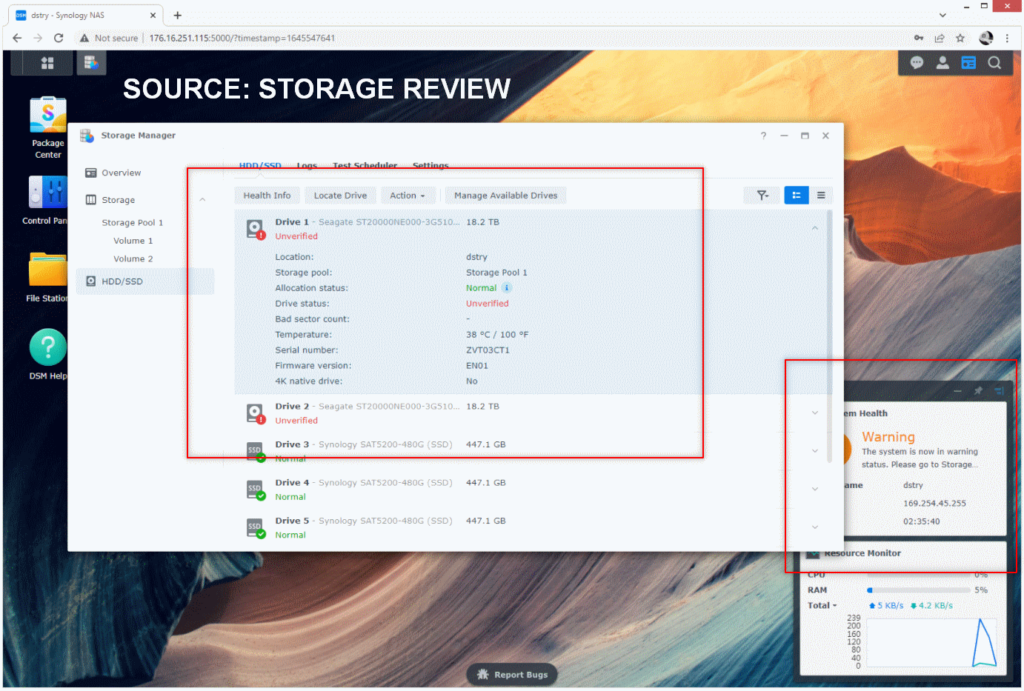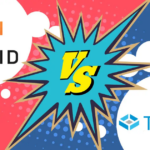
Software Comparison: Synology DSM vs TrueNAS Scale
It isn’t easy to choose between these two highly popular systems for safe data storage, access, and sharing! You have a premium software platform with Synology DSM that effortlessly emulates whole operating system levels of functions. It has a very user-friendly design, innovative controls, and a large selection of included applications and services with their own mobile applications.
TrueNAS is an open-source and largely free-to-download service that allows you to build a detailed and completely customizable storage system based on one of the most popular file systems in the storage community, a wide degree of third-party support, and ease of integration due to the DIY and widely customizable hardware.

Both NAS software platforms are utilized by both residential and business customers, but with one being paid and the other being free, there are numerous reasons why one NAS software platform may be better suited to your needs than the other. So today I’m going to compare Synology DSM vs TrueNAS Scale, break down each of their unique benefits and cons, show you how they vary, and ultimately help you decide whether to go with TrueNAS or Synology for your own private server. Let’s get started.
Storage Management: Synology DSM vs TrueNAS Scale
One of the most important issues most customers will have when contemplating TrueNAS and Synology DSM for their own private NAS server is how storage is managed. These two NAS platforms have picked their intended course very early and differ in some crucial aspects, from how it makes it available and stable to how it reacts and adapts to changes in stability.
TrueNAS uses ZFS as its file system of choice, and while it is a little more resource-intensive (primarily in memory) to run its range of services, it is a fantastically enterprise file system that supports native inline deduplication across the system (i.e. if data being backed up from multiple clients is the same, such as OS data or shared databases, it only stores one copy and keeps an internal index of where that data is needed/stored across users), Synology and its DSM platform (with the exception of a few more affordable devices in their portfolio) use the BTRFS and EXT4 file systems.

The Synology DSM Storage Manager GUI has seen a very recent design change with the DSM 6.2 release, and while it still maintains a high level of user-friendliness and ease of use, it now has a little more graphical structure than before. Because Synology DSM is only commercially accessible when purchased with a hardware NAS, the graphical user interface can be much more tailored to the NAS in a way that TrueNAS’ open-source and DIY nature does not allow.
There are several choices for creating a new storage pool, establishing a hot spare, creating volumes, enabling clever caching with connected SSDs (SATA or NVMe), and enabling auto RAID repairs, among other things. It offers all of these options while still retaining a user-friendly interface.
The TrueNAS storage manager, on the other hand, is considerably more text/stat oriented and the configuration and creation options are built into a series of native settings menus on the side of each storage container, despite being EASILY more adaptable and customizable to your needs.
There are ZFS-specific aspects, such as customizing and monitoring the inline compression/deduplication output, as well as significantly more text-heavy volume, data set, and pool formation. TrueNAS’s storage manager provides more control and flexibility (as expected), but it may be fairly daunting and is not recommended for beginners.
Again, it should come as no surprise that the TrueNAS platform is the more comprehensive, technical, and least user-friendly, but it also appears to provide a wider degree of alternatives in terms of long-term storage mounting if your TrueNAS system breaks or is upgraded.
Similarly, the attractiveness of overall faster RAID building, rebuilding, and recovering on TrueNAS with the added benefit of triple parity will easily win over a large number of seasoned storage managers and admin managers with the time and experience to craft the best storage system. Having said that, the Synology storage manager and the benefits DSM provides to their platform cannot be understated.
BTRFS, while a tad greener in some people’s eyes than ZF, is far less resource-hungry while still providing data parity checks and file self-healing. Furthermore, TrueNAS still lacks the versatility of Synology Hybrid RAID and how it allows you to extend your storage on the core Synology NAS system AND when attaching extension chassis.
Synology’s position on enterprise systems and HDD/SSD compatibility, as well as SHR not being an enterprise-level solution (not offered beyond the PLUS series), may be what holds this all back. Regardless, both Synology DSM and TrueNAS Core offer a massive amount of storage capacity.
Security Comparison: Synology DSM vs TrueNAS Scale
Both Synology DSM and TrueNAS Core are among the most secure systems on which to store your personal or commercial data, as you might expect from software designed at a time when data security concerns have never been stronger.
As bold as it seems, these two NAS platforms have been the least affected by ransomware, malware, and exploited vulnerabilities throughout the years, with the only major event being Synolocker in 2014. Both manufacturers, TrueNAS HERE and Synology HERE, have their own Security Advisory pages that publicize any discovered vulnerabilities and provide status updates on how they are being addressed.
Having said that, both systems are architecturally significantly different in terms of how services, tools, and applications can communicate within the system, as well as how security management is presented to the end-user. More than organizing your data, the security settings and suggested setup for each individual user will be a major consideration from the start.
Unsurprisingly, Synology has presented this in a much more user-friendly manner, including a security advisory panel that can be executed at any time or on a schedule. This tool examines a wide range of settings, including password strength, active users, ports, app controls, redundancy, backups, and more.

It is a really valuable tool for folks who do not completely understand the complexities of keeping their system secure on a technical level, and it is something that I am surprised to see missing from TrueNAS.
The TrueNAS platform, on the other hand, takes the traditional approach of providing a massive amount of control through a single page (which, to be fair, includes a lot of tips/? bubbles for advice at times) that allows users to pick how and what they want to communicate.
One thing to keep in mind is that by default, ALL of these communication settings and system functions that potentially effect your security are turned OFF. This isn’t unusual (since many of these would be disabled on most NAS platforms), but on other NAS software, such as Synology DSM or QNAP QTS, these options and services are split across several regions of the GUI control panel and file services.
Having them ALL listed in a single window allows you to change settings much faster, and closing ALL the doors in the event of a network security risk can save critical time.
And, while we’re on the subject of being aware of security risks (as well as when your system exhibits unusual behavior), TrueNAS offers a considerably wider choice of security warnings and notification modifications than Synology DSM. That is not to imply that the Synology DSM does not have notifications; it does, and they may be configured as ‘light, ‘medium’, ‘high,’ or ‘custom’ for your convenience.
TrueNAS, on the other hand, provides a massive range of notification choices that affect some pretty detailed parts of system/network behavior. It will take some time to scroll and change if you want a genuinely customized notifications and alerts setup, but it simply offers more variables than the standard Synology DSM 7 NAS package.

Now, I say ‘default package’ because, once again, Synology has the subscription-based service Active Insight, which is significantly better, can be broken down into excruciatingly precise detail, and allows you to create custom reports that are delivered to the managers concerned in a much more ‘human’ email format. It’s just a shame that this service requires a separate membership and isn’t included with the system.
Now, I say ‘default package’ because, once again, Synology has the subscription-based service Active Insight, which is significantly better, can be broken down into excruciatingly precise detail, and allows you to create custom reports that are delivered to the managers concerned in a much more ‘human’ email format. It’s just a shame that this service requires a separate membership and isn’t included with the system.
Then there’s the topic of encryption. For those who are unaware, encryption on a network-attached storage server can refer to one of two things. There is an encrypted connection that can be facilitated by an SSL certificate (both platforms support a wide range of paid/free SSL certificate options that can be easily applied to the system) OR it can refer to the data on your NAS living in a container with encrypted lock and key architecture.
This means that when you create your storage, you instruct the system to encrypt any data stored to the disks, and it may be mounted/locked using an encrypted key or a downloaded digital key generated during setup. As previously stated, both Synology NAS DSM and TrueNAS core enable encryption as well as self-encrypted drives (SEDs). TrueNAS (Pools, zVols, zDevs, etc.) may, nevertheless, encrypt things to a greater extent than the Synology DSM platform.
Furthermore, TrueNAS supports a broader range of encryption protocols, as well as an intriguing ‘pass’ mechanism that allows a user to rapidly lock/unlock their encrypted storage container without typing a long key or retaining a digital encryption key on the local system.
Overall, both the Synology DSM and TrueNAS Core platforms are quite secure, and while they use different tactics at times, they appear to reach the same conclusion. In terms of points, I would say that the TrueNAS system has the better ability for customization in its security configuration, but (as usual) requires you to spend more time setting it all up to your tastes/requirements.
Conclusion: Synology DSM vs TrueNAS Scale
It is so easy to just look at the TrueNAS option as the free but complex choice and the Synology DSM option as the easy but expensive one, BUT the truth is a little more complex than that. For a start, the wide variety of customization and flexibility that is inherent to TrueNAS is something that I genuinely think only higher-end business users are going to be able to fully realize.
Home users who are building their own NAS from scratch and opt for TrueNAS for the software will definitely enjoy customizing their solution to their needs/network-environment, but the most long term customizations, reports and adaptive protocols of TrueNAS are much better suited to a business that needs to change as business/staff/data grows.
However, those users will be significantly more attracted to a ‘turnkey’ solution (i.e. a NAS system that is basically ready to go straight out of the box) and will pay for the privilege (i.e. time is money). This is where Synology comes in with confidence, knowing that they have a wide selection of first-party apps to transition away from Google/Microsoft services, as well as management and security solutions that are essentially unrivaled in the industry.
TrueNAS remains a viable option for businesses seeking an instantly deployable solution and business class support, with official TrueNAS hardware provider iXsystems offering pre-populated and customizable solutions, as well as tiered support subscriptions – but this only truly appeals to users who understand what FreeBSD and ZFS can provide that EXT4 and BTRFS cannot.
Alternatively, if you have the time and enthusiasm, already have the technical skills under your belt, have very specific storage and network requirements, and/or are looking for a solution that you plan on upgrading and improving in the coming years, TrueNAS Core (and indeed TrueNAS Scale with Linux) will be a much better choice.
What it lacks in first-party programs and convenience of use compared to Synology DSM, it makes up for with a really unrivaled range of customization and configuration options that are unavailable elsewhere.
Furthermore, ZFS will always be at the top of many pro-storage user lists – just keep in mind that TrueNAS (unless you decide for an iXsystem) is free, but the hardware and time you will spend implementing it will cost you.











